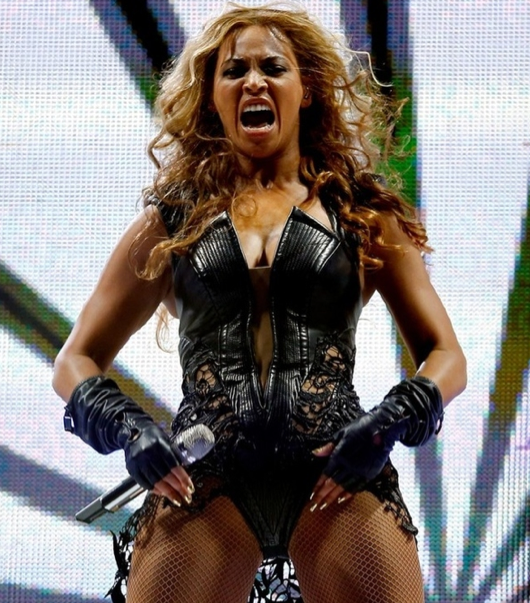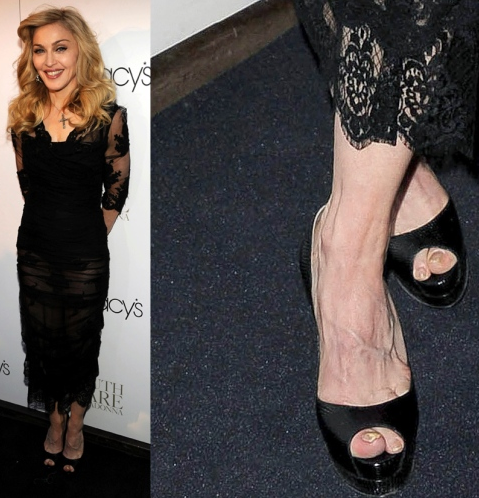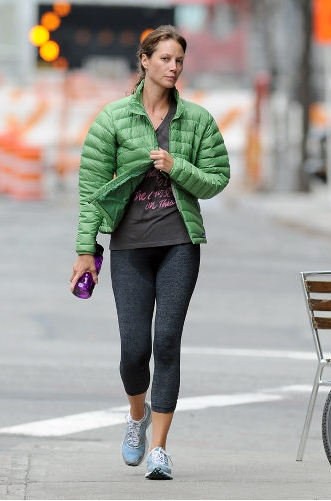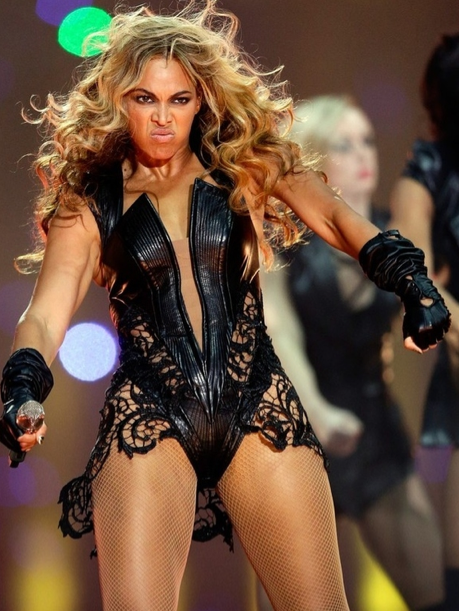
Image Credit: screenshot from Buzzfeed.com
Beyonce's publicist has created quite a media stir about photographs taken of the star's Super Bowl performance. On Tuesday this person apparently requested that Buzzfeed remove several "unflattering" images from the "33 Fiercest Moments from Beyonce's Halftime Show" gallery. The request was fruitless, considering the photos are still up; but it may have served a hidden purpose in igniting a flurry of posts, like Huffington's, that deny Beyonce has ever taken an unflattering photo. As the title suggests, Buzzfeed's controversial story adopts a playful, celebratory tone rather than a critical or parodic one. Its string of increasingly intense photos and enthusiastic captions create a mounting sense of the star's "ferocity," culminating in her mock deification ("Beysus knelt down to bless the audience") and popular coronation ("basically every moment was fierce...Because she's Queen B"). So why would anyone view this as bad publicity?
My hunch is that the publicist does not actually view the photos as damaging, but rather, understands the popular fascination with that which is deemed "unflattering." Labeling the actions or images of a celebrity as unflattering heightens the public's interest in them, and the resulting mediated exchange of criticism and support for the star is what's known as buzz. But in Beyonce's case, the unflattering label has been applied in an unusual way. This blog post explores why that is, and how the special deployment of this label asks us to readjust our idea of what's artificial and what's real.
What does the word unflattering mean, on a basic semantic level? Let's start with the "flattering" part. To flatter someone is to compliment them--stroke their ego--by stretching the truth. Things that flatter also involve a kind of deception. For instance, a flattering outfit or photograph hides what is unsightly, or by some measures, what is real. Thus, unflattering poses, pictures, and representations body forth the real without the manipulating or sterilizing it. (I realize that this definition is not as nuanced as it might be, but bear with me).
I use the phrase "body forth" intentionally, because tabloids and other celebrity spin machines typically associate the unflattering with certain kinds of bodily display. There is an entire industry devoted to documenting these "shocking" postures. When I Googled "unflattering celebrity photos" the Daily News piece "Meanest celebrity photos" came up along with millions of other hits (don't let the title fool you--the photo captions are merciless not sympathetic). Many of the 96 images in this gallery focus on bodily imperfection, contortion, malfunction, etc. Close-up shots direct the viewer's attention to the most grisly part of the subject's anotomy, as in the photo expose of Madonna's toenails below.

Image Credit: http://www.nydailynews.com
From the same treasure trove, here is one of Christy Turlington sporting a sweat stain that would make any ten-year-old snicker.
 Image Credit: http://www.nydailynews.com
Image Credit: http://www.nydailynews.com
In both cases, the photographs reveal the real condition of the celebrity body, the body that exists beneath its manicured exterior. Questions of whether this kind of unflattering display is universally interesting, or whether it is ethical to publicize, are up for debate. But for our purposes it offers a point of comparison to the kind of labelling that occurred with Buzzfeed's Beyonce montage. The publicist's take-down request suggests that some of the published images--many of them capture the singer in the act of belting out a tune or grimacing theatrically to express feeling--do not show the singer in the best light, explicitly describing them as "unflattering." But, frankly, none of the Beyonce Super Bowl photos are remotely unflattering, at least when measured by the industry standards discussed above. Yes, we see (nearly) every nook and cranny of Beyonce's figure, but her nails are painted, her fishnets aren't torn, and her body appears smooth, muscular and hairless.
So, if the pictures exhibit no sign that Beyonce inhabits a real body--through bulges, rolls, discoloration, etc.--then what is there to raise an eyebrow at? The critique (ironically initiated by the star's own publicist) seems to be aimed at Beyonce's artistic performance instead of her personal appearance, the usual domain of the tabloid smear campaigns discussed earlier. This raises an interesting question. Can a performance, or a piece of art, be unflattering to the artist? It may be helpful to recall how we previously defined the word unflattering: something is unflattering if it fails to cover up undesirable aspects of reality. In the realms of musical or dramatic performance the term could therefore refer to the performer's fallability, or to signs that the dialogue is scripted and the production budget low. In Beyonce's case, though, it actually seems like the intensity rather than the quality of her performance is under scrutiny. The photo below is indicative of the ones singled out by the publicist's email.

Image Credit: screenshot from Buzzfeed.com
Calling photos like this unflattering--photos that reveal a performer's personality, feeling, effort, or unpredictability--suggests that there is no place in popular entertainment for real self-expression. Only highly choreographed, controlled movements can be flattering and feelings must be pantomimed, not truly felt. They certainly can't be grunted.


 Image Credit:
Image Credit: 
Recent comments
2 years 29 weeks ago
2 years 44 weeks ago
2 years 44 weeks ago
2 years 50 weeks ago
3 years 4 weeks ago
3 years 4 weeks ago
3 years 4 weeks ago
3 years 6 weeks ago
3 years 6 weeks ago
3 years 6 weeks ago